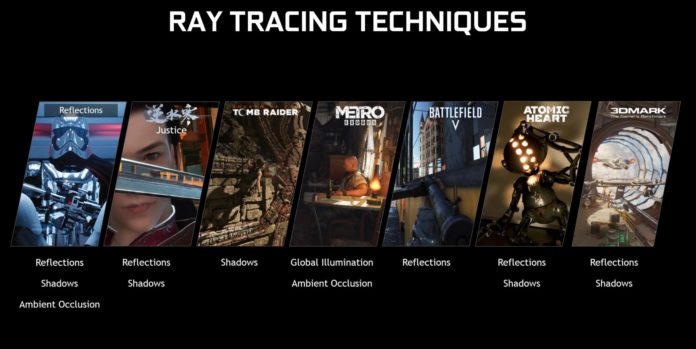NVIDIA just announced that it will be releasing a driver in the next 24 hours to enable real-time ray tracing on the older Pascal based GeForce GTX 10 series graphics cards as well as the GTX 16 lineup. You can read the original story here. In case of the 20-series GPUs, ray tracing is hardware based (read RTCores) while DLSS provides the necessary performance boost if you fail to hit playable FPS. On the other hand, the GTX Pascal and Turing products, fall back to DXR’s software layer to perform real-time ray tracing.
This is done on the driver or API level using the existing shaders, but since the calculations are quite complex, it’s hard to get decent frame rates unless you have a beefy card, say the GeForce GTX 1080 Ti or even a GTX 1660 Ti. This will become more apparent in the following benchmarks which mind you have been provided by NVIDIA itself:
In games like Battlefield V or Shadow of the Tomb Raider where only a single ray traced effect like shadows or reflections is in action, the higher-end GeForce GTX 1080 Ti puts up a respectable performance netting 30+ FPS at 1440p. However, in the rest of the titles, including Metro Exodus, Justice and Atomic Heart, the former flagship begins to crumble under the weight of multiple ray traced techniques. These three games use real-time ray tracing for reflections in tandem with either ambient occlusion or global illumination. Without the RTCores and DLSS support, this proves to be a bit too much for the GTX overlord.
Read more:
- AMD Radeon Navi Graphics Cards to be Released at E3 2019
- NVIDIA Releases 3 Demos to Showcase Ray Tracing on GeForce GTX and RTX Cards
- ASUS Zenbook S13: “World’s Thinnest Laptop with Discrete Graphics”, Availability and Price Revealed

The ball is in AMD’s court now. Fans will be hoping that team red releases a similar software-based








